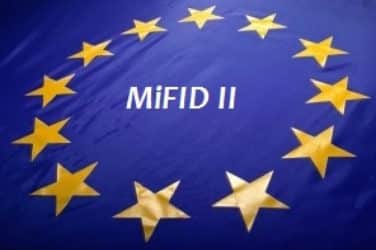Mid- and small-tier US-based asset managers should not think that they’ve dodged the MiFID II bullet, according to the discussion on a Security Traders Association open call.
“If you are a US manager that doesn’t have any physical presence in Europe, you are not in the regulation’s bullseye,” said Tom Conigliaro, managing director at IHS Markit Brokerage and Research Services. “But from a practical and competitive pressure situation, you could be.”
Under MiFID II, which goes into effect in January 2018, asset managers that fall under the directive’s mandate no longer will be able to pay for research from commissions. Instead, they will need to pay for research directly using their own balance sheet or via a research payment account funded by commission sharing agreements or a research fee charged to clients.
Implementing an RPA will require asset managers to track their interaction with their counterparties, assess the quality of the delivered research regularly, establish and allocate a research budget, and manage payments directly or through an RPA administrator.
According to Conigliaro, the global asset managers are gravitating to MiFID II’s stricter research funding requirements rather than operate under multiple regulatory regimes.

Tom Conigliaro,
IHS Markit
“That’s how it will first leak into the US,” he noted. “These global managers that find it much easiest to adhere to what they see as the most stringent regulatory standard and operate synergistically across the globe.”
Once US-based global asset managers adopt the regime, it will become de facto best practices for the industry and a bullet item on existing and prospective clients’ checklists.
“US managers may be perceived at a disadvantage if they are not following MiFID,” said Conigliaro. “Most underlying clients will view MiFID as a positive thing with better transparency, more reporting, and the other things that go along with it.”
However, domestic US asset managers do not necessarily have to follow the MiFID II regime to the letter but should set up budgets, have an organization-wide evaluation process in place, rate the research and then rank it.
These procedures will prevent asset managers from being caught flat-footed when clients call inquiring about the firm’s transparency when it comes to the funding of research, according to Conigliaro.
“It will give you a head start when that bell rings, and you have no choice but to move into a MiFID-oriented regime,” he added.





